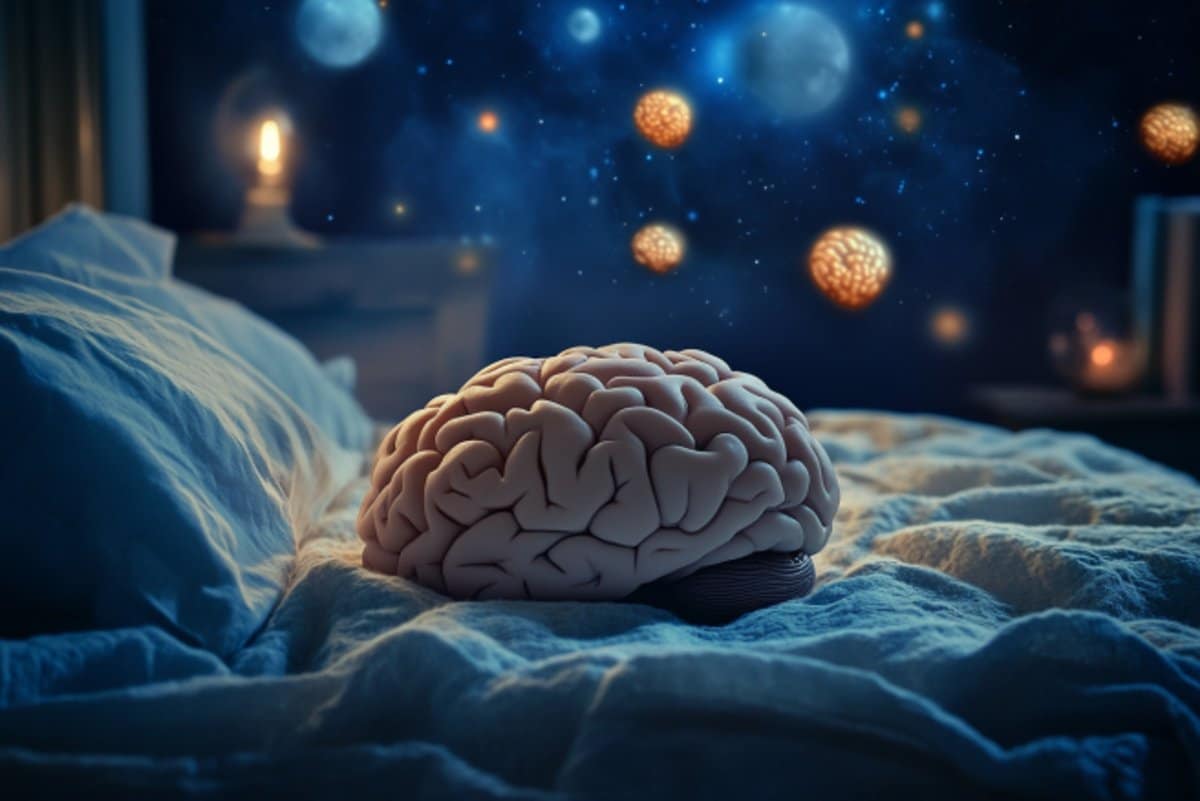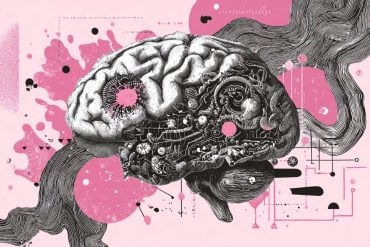Summary: Chronic sleep disorders and short-term sleep deprivation affect different regions of the brain, highlighting distinct neural impacts. A meta-analysis of 231 brain studies showed that chronic sleep disorders alter regions involved in emotions and memory, while short-term deprivation primarily affects attention and movement regulation.
These findings could pave the way for more targeted therapies and preventive strategies for mental illnesses linked to poor sleep. Understanding these neural differences may also help develop treatments tailored to specific types of sleep disruption.
Key Facts:
- Different Brain Regions: Chronic sleep disorders affect the anterior cingulate cortex, amygdala, and hippocampus, while short-term sleep loss impacts the thalamus.
- Mental Health Risks: Chronic sleep loss raises the risk of depression, anxiety, and neurodegenerative diseases.
- Clinical Applications: Findings could inform targeted therapies and future transdiagnostic studies across multiple sleep disorders.
Source: Forschungszentrum Juelich
About 20% to 35% of the population suffers from chronic sleep disorders—and up to half of all people in older age. Moreover, almost every teenager or adult has experienced short-term sleep deprivation at some point.
There are many reasons for not getting enough sleep, whether it be partying, a long day at work, caring for relatives, or simply whiling away time on smartphones.

In a recent meta-study, Jülich researchers have now been able to show that the brain regions involved in the short-term and long-term conditions differ significantly.
The results of the study were published in the journal JAMA Psychiatry.
“Poor sleep is one of the most important—but changeable—risk factors for mental illnesses in adolescents and older people,” says Jülich researcher and Privatdozent Dr. Masoud Tahmasian, who coordinated the study. In contrast, long-term pathological sleep disorders, such as insomnia, obstructive sleep apnea, narcolepsy, and short-term sleep deprivation, are located in different parts of the brain.
Lack of sleep has negative impact
Gerion Reimann, one of the lead authors of the study, who wrote his master’s thesis on this topic at the Jülich Institute of Neuroscience and Medicine (INM-7), says, “The symptoms of sleep deprivation are similar during the day. Anyone who has ever slept poorly or not had enough sleep will know how you often feel a bit grumpy—or unable to perform tasks well due to your attention and reaction times being significantly impaired.”
Repeated instances of sleep deprivation can have much more serious consequences. Studies show that frequent sleep deprivation has an adverse effect on brain development, reduces the removal of harmful substances from the brain, decreases emotional stability, and causes a massive decline in working memory as well as a person’s performance at school or at work.
“Chronic sleep disorders and a continual lack of sleep are also risk factors for various mental illnesses,” says Reimann.
Different brain structures detected
The Jülich researchers analyzed data from 231 brain studies. The studies examined and compared several groups—for example, patients suffering from chronic sleep disorders with healthy individuals, or healthy, well-rested test subjects with those suffering from sleep deprivation. The results show clear neural differences between the groups.
People with chronic sleep disorders showed changes in a region of the brain known as the “anterior cingulate cortex,” as well as in the right amygdala and in the hippocampus, one of the brain’s central hubs. These regions are involved in processing emotions, memories, decisions, and sensations, for example.
Reimann explains, “These abnormalities reflect common symptoms that occur during the day with various sleep disorders, such as exhaustion, memory problems, mood swings, and even depression. Whether the changes in the brain are the cause or a consequence of chronic sleep disorders remains to be seen.”
In contrast, short-term sleep deprivation was associated with changes in the right thalamus, a brain region responsible for temperature regulation, movement, and the perception of pain.
“This corresponds with the symptoms of short-term sleep deprivation,” says Reimann. “You are less attentive, restricted in your actions, and often feel the cold more easily.”
Important findings for future studies
“We were thus able to show for the first time that there are no overlapping brain regions between the two groups,” says Reimann.
“This is important for future studies. We can now focus on the precise structural and functional regions and networks that are representative of the respective sleep disorder,” he emphasizes.
“Individual sleep disorders have previously been considered separately from one another. Now we can also address questions about chronic sleep disorders in transdiagnostic studies—in other words, we can examine several findings at the same time,” adds Tahmasian.
The new findings might also pave the way for more targeted therapies and preventive measures.
“Many patients who suffer from insomnia—or chronic sleep disorders in general—also have an increased risk of depression, anxiety, and other mental disorders, as well as Alzheimer’s and other forms of dementia,” explains Reimann.
“Now that we know which brain regions are involved, we can investigate in more detail the effects of non-pharmacological therapies, such as cognitive behavioral therapy or continuous positive airway pressure (CPAP) therapy, in comparison to pharmacological treatments for various sleep disorders,” he adds.
About this sleep and neuroscience research news
Author: Gerion Reimann
Source: Forschungszentrum Juelich
Contact: Gerion Reimann – Forschungszentrum Juelich
Image: The image is credited to Neuroscience News
Original Research: Closed access.
“Distinct Convergent Brain Alterations in Sleep Disorders and Sleep Deprivation” by Gerion Reimann et al. JAMA Psychiatry
Abstract
Distinct Convergent Brain Alterations in Sleep Disorders and Sleep Deprivation
Importance
Sleep disorders have different etiologies yet share some nocturnal and daytime symptoms, suggesting common neurobiological substrates; healthy individuals undergoing experimental sleep deprivation also report analogous daytime symptoms.
However, brain similarities and differences between long-term sleep disorders and short-term sleep deprivation are unclear.
Objective
To investigate the shared and specific neural correlates across sleep disorders and sleep deprivation.
Data Sources
PubMed, Web of Science, Embase, Scopus, and BrainMap were searched up to January 2024 to identify relevant structural and functional neuroimaging articles.
Study Selection
Whole-brain neuroimaging articles reporting voxel-based group differences between patients with different sleep disorders and healthy control participants or between total or partial sleep-deprived and well-rested individuals were included.
Data Extraction and Synthesis
Significant coordinates of group comparisons, their contrast direction (eg, patients < controls), and imaging modality were extracted. For each article, 2 raters independently evaluated eligibility and extracted data. Subsequently, several meta-analyses were performed with the revised activation likelihood estimation algorithm using P < .05 cluster-level familywise error correction.
Main Outcomes and Measures
Transdiagnostic regional brain alterations were identified across sleep disorders and among articles reporting sleep deprivation. Their associated behavioral functions and task-based or task-free connectivity patterns were explored using 2 independent datasets (BrainMap and the enhanced Nathan Kline Institute–Rockland Sample).
Results
A total of 231 articles (140 unique experiments, 3380 unique participants) were retrieved. The analysis across sleep disorders (n = 95 experiments) identified the subgenual anterior cingulate cortex (176 voxels, z score = 4.86), associated with reward, reasoning, and gustation, and the amygdala and hippocampus (130 voxels, z score = 4.00), associated with negative emotion processing, memory, and olfaction. Both clusters had positive functional connectivity with the default mode network.
The right thalamus (153 voxels, z score = 5.21) emerged as a consistent regional alteration following sleep deprivation (n = 45 experiments). This cluster was associated with thermoregulation, action, and pain perception and showed positive functional connectivity with subcortical and (pre)motor regions.
Subanalyses regarding the direction of alterations demonstrated that the subgenual anterior cingulate cortex exhibited decreased activation, connectivity, and/or volume, while the amygdala and hippocampus cluster and the thalamus cluster demonstrated increased activation,connectivity, and/or volume.
Conclusions and Relevance
Distinct convergent brain abnormalities were observed between long-term sleep disorders (probably reflecting shared symptoms) and short-term sleep deprivation.







